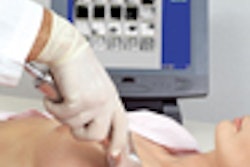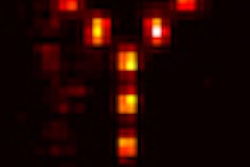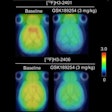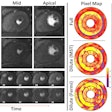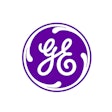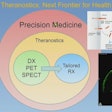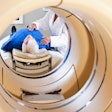The financial burden of adding functional imaging exams to the standard diagnostic work-up for Alzheimer’s disease has researchers from Massachusetts General Hospital (MGH) in Boston questioning the cost-effectiveness of the tests, particularly in light of positive results that can be obtained from therapeutic agents that are currently available.
Writing in the October issue of Radiology, Pamela McMahon, Sally Araki, and colleagues from the MGH Decision Analysis and Technology Assessment Group compared the cost-effectiveness of functional neuroimaging with the standard diagnostic strategy in the work-up of patients at specialized Alzheimer’s-disease clinics.
The standard diagnostic strategy is to conduct a detailed patient history, assess cognition and functional status, conduct laboratory testing, and perform a brain imaging examination using CT or MR imaging to identify structural abnormalities caused by other conditions.
The strategy has been reported to have a positive predictive value (PPV) of 90% for Alzheimer’s disease, but its sensitivity is unknown, the authors wrote (Radiology, October 2000, Vol.217:1, pp.58-68).
Functional imaging examinations such as PET, SPECT, or dynamic susceptibility contrast-enhanced MRI can also aid in the diagnosis of dementia. These modalities can help measure abnormalities in cerebral blood volume or flow characteristic of Alzheimer’s disease.
Accurate diagnosis of early Alzheimer’s is needed if patients are to benefit from the latest acetylcholinesterase inhibitors, since these drugs are indicated for only mild to moderate cases, the MGH researchers wrote. Diagnosing the cause of dementia can help identify potentially treatable causes such as tumor, stroke, or vascular dementia.
Decision analysis enabled the study authors to model the diagnosis, drug treatment, and cost of care in patients with symptoms of dementia. Health gains were measured in quality-adjusted life-years (QALYs), or a calculation of the number of healthy years of life gained by using an intervention.
A second model compared the relative cost-effectiveness of strategies that add a functional neuroimaging test to the conventional diagnostic work-up strategy. The results were presented in terms of incremental cost-effectiveness ratios (ICERs).
"To achieve stable estimates of costs and effectiveness, three cohorts of 32,000 trials each were simulated for each diagnostic strategy, and the results were averaged," they explained.
In addition, for each six-week cycle, patients were classified by disease states -- no disease, mild, moderate, severe, or dead -- and by healthcare settings, such as community or nursing home.
Finally, using MGH data, it was estimated that the prevalence of Alzheimer’s disease stood at 56%. "Thus, for the base-case analysis, we estimated that approximately 44% of patients would have no Alzheimer disease and assumed that the remaining patients would have either mild or moderate disease," they said.
According to the results, the researchers found the strategy of MRI plus dynamic susceptibility contrast-enhanced MR imaging, compared with the standard examination, had an ICER of $479,500 per QALY.
"The ICER of MR imaging plus dynamic susceptibility contrast-enhanced MR imaging was $479,500 per QALY gained, a ratio at the high end of the range of those typically calculated for funded interventions in the United States," they said. "Furthermore, under base-case assumptions, SPECT, either visual or computed and quantitative, was both more costly and less effective than the standard imaging examination." Computed SPECT had an ICER of $977,100 per QALY gained.
The investigators found that improvements in drug effectiveness or duration had a more dramatic effect on cost-effectiveness than adding a functional imaging component. Under the study's base-case assumptions, any new diagnostic test would have to be inexpensive to meet commonly cited thresholds of cost-effectiveness.
The authors noted that their model basis was a one-time diagnostic-examination strategy for patients suspected of having Alzheimer’s disease. Therefore, the results could not be extrapolated to a community-wide screening program, or to repeated rounds of testing. Also, in settings other than tertiary Alzheimer’s disease centers, the sensitivity and specificity of a standard diagnostic work-up may be much lower, and the functional imaging strategies might become more cost-effective, they wrote.
Nonetheless, the base-case analysis suggests that it is not cost-effective to add functional imaging to the standard diagnostic work-up for Alzheimer’s disease, given the effectiveness of currently available therapeutic agents, according to the authors.
"These results are consistent with current practice; functional imaging examinations are performed infrequently," they wrote.
By Jonathan S. Batchelor
AuntMinnie.com staff writer
October 11, 2000
Related Reading
MRI measures can predict Alzheimer’s's disease, March 30, 2000
Let AuntMinnie.com know what you think about this story.
Copyright © 2000 AuntMinnie.com






